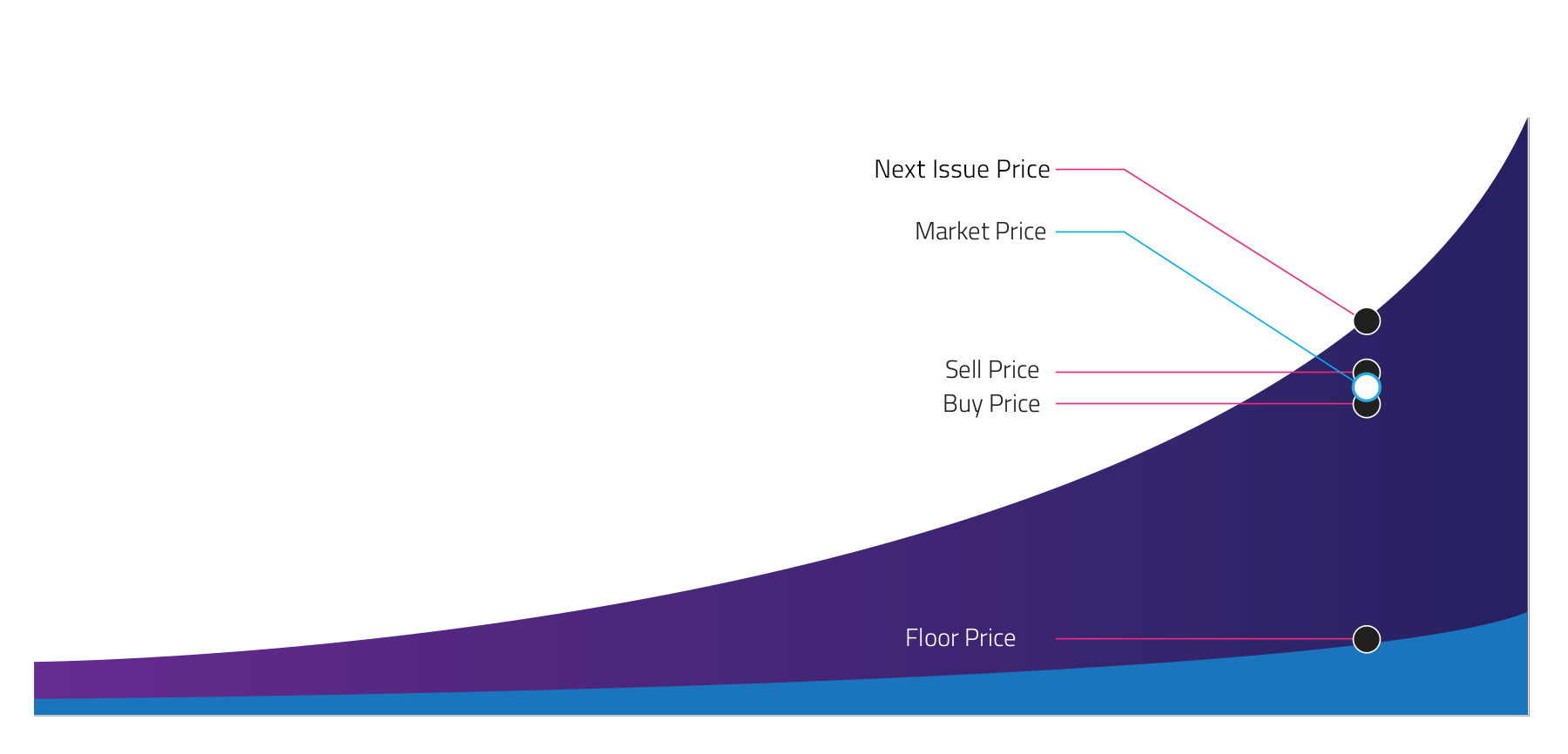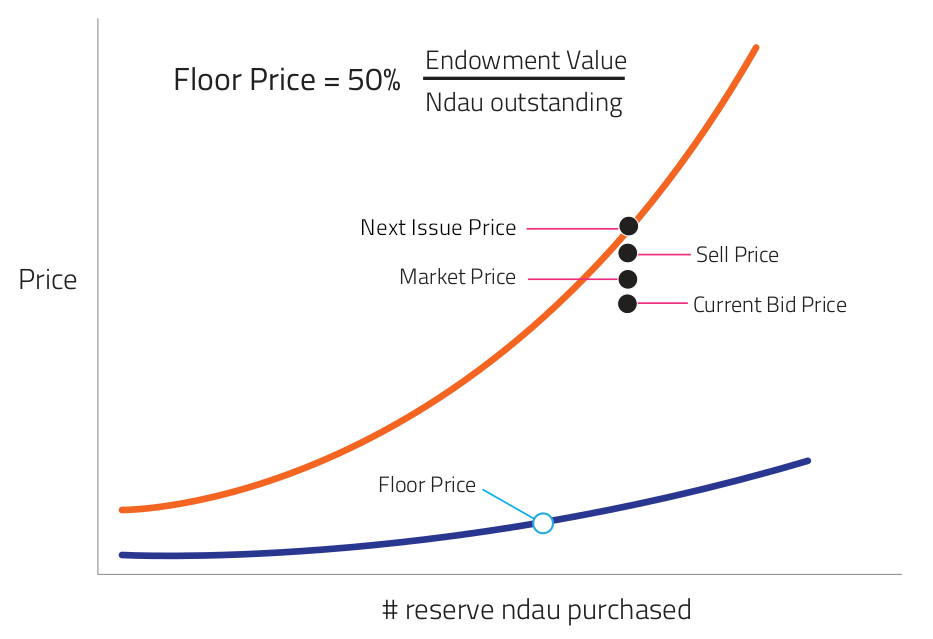The Axiom Foundation is tasked by the BPC with executing the release of reserve ndau into the market place according to ndau monetary policy. Currency float expands supply when necessary based on the S-curve and the Next Issue Price schedule.
At any given time, there are five defined ndau price points:
- The Next Issue Price (aka “Target Price”): The current price at which reserve ndau is sold according to the Next Issue Price schedule. The release of ndau into the marketplace occurs gradually following a well-defined technology growth pattern. This growth occurs naturally along an S-curve (the “Next Issue Price Curve”) as modeled in the Diffusion of Innovations theory – a theory which seeks to explain how, why, and at what rate new ideas and technologies spread. New ndau are released into the market when demand pushes the market price of ndau upward along the Next Issue Price Curve. The Next Issue Price Curve identifies fixed prices at which ndau is released (each being a “Next Issue Price”). There is a finite amount of ndau (1,000) at each Next Issue Price level on the Next Issue Price Curve, each level higher than previous one.
- The Sell (or ask) Price: The lowest price a seller is willing to sell ndau in the market (may vary across exchanges).
- The Market Price: The Axiom Foundation is required to take into account observable Buy and Sell Prices and filled orders across the ecosystem and combines them into a single published Market Price.
- The Buy (or bid) Price: The highest price a buyer is willing to pay for ndau in the market (may vary across exchanges).
- The Floor Price: The Floor Price is derived in a way that enables resiliency from currency attacks and serves to induce long-term dependability and liquidity. The Floor Price is calculated dynamically by dividing the Endowment’s total current value by the total number of ndau in circulation and multiplying it by 50 percent.
You can see real-time prices on the ndau blockchain via this API call. (ndau API endpoint documentation is here in GitHub)

This dynamic pricing strategy functions to increase supply as demand warrants (due to network effects) while providing a pre-defined mechanism for permanently reducing supply when all other means of volatility mitigation have proven insufficient.
Ownership of ndau in no way confers pro-rata ownership of any of the assets or reserve ndau in the Endowment. Rather, it is similar to the ownership of a central bank’s currency. The reserves held by a central bank are used to stabilize the currency. A central bank’s governing body (similar to the BPC) sets policy for management of the reserves (similar to reserves held in the the Endowment) and the rules by which those reserves (or the Endowment) may be used to support currency stability targets. Central banks use an annual target inflation rate to guide the value of their currency, while the BPC uses the current point on the defined S-curve as its next issue price value. However, the BPC is more accountable to holders of the currency because it is directly electable by them, whereas a holder of U.S. dollars, for example, does not wield any influence over who governs the Federal Reserve Board. In either case, policy may be adapted over time according to the respective governing body as needs warrant. As a result, any attempt by the BPC to change the ndau monetary policy in a manner that would negatively impact ndau would be subject to being overruled by the vote of ndau holders.
BUYING AT FLOOR PRICE
The Axiom Foundation is contractually obligated to buy back ndau at a known and continuously published Floor Price. This obligation is subject to the liquidity policy managed by the BPC and implemented using the assets in the Endowment. In a Floor Price transaction, the Axiom Foundation has put an offer to buy ndau on an exchange, and an ndau seller has accepted that offer. The Endowment decreases by the purchase amount and the number of outstanding ndau decreases as the repurchased ndau are permanently removed from circulation. Each Floor Price purchase increases the subsequent Floor Price for the outstanding ndau and provides a stabilizing force for existing ndau holders. Consequently, should further Floor Price transactions continue, the mathematical mechanism will drive the Floor Price up until it reaches the Next Issue Price.
THE FLOOR PRICE
The floor price is quoted and made available by the Axiom Foundation.

This buying mechanism ensures that the Endowment will always have reserves to purchase ndau in the event the market should require large reductions in ndau supply. The BPC is tasked with continuously reviewing liquidity policy and its consequent rate of liquefaction. The goal being that the Axiom Foundation needs to preserve its purchasing power to buyback over long periods of time to best ensure its ability to stabilize ndau during such conditions.